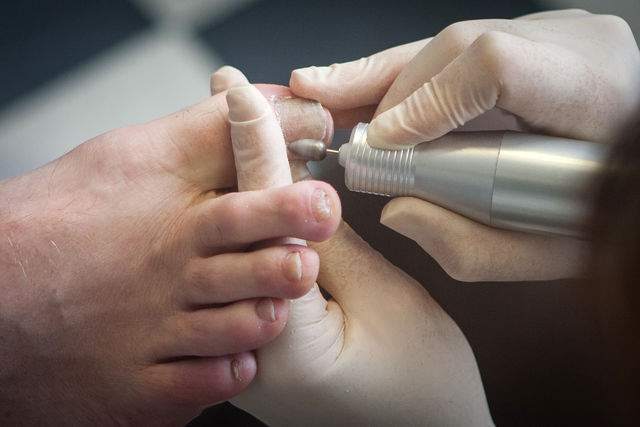It wasn't my first ingrown toenail, but it sure was going to be the last one I attempted to remove by myself.
I prefer to manage my toenails myself. Unlike most millennials, I wouldn't say I like nail salons. Unfortunately, I made the mistake of cutting them too short.
Within a week, my big toe began to swell, and the nail curved inwards. After even an hour of walking, I would find my socks soaked in blood and worse. It was disgusting.
I thought that soaking and attempting to remove the ingrown nail myself was a good idea. I couldn't have been more wrong. The nail began to yellow and crack, and soon I wasn't able to walk at all.
Finally, after a consultation with my podiatrist, the symptoms began to lessen.
Podiatrists are health care professionals, expertly trained in feet and ankles. Our feet are one of the most important parts of our bodies, and sore or misaligned feet can impact our backs and other parts of the body.
If you are experiencing any of the following symptoms, it is time to book an appointment with your podiatrist.
- Swelling, pain or numbness
Suffering the occasional swollen or sore feet is natural. Still, it's a common misconception that a sore foot every day is normal. Just as you would see your dentist for a toothache, it's essential to visit your podiatrist for your aching feet. Any sudden pain or swelling could be a sign of hidden damage and should be accessed as soon as possible.
- Ingrown toenails
Ingrown toenails are a common problem amongst teenagers and the elderly. You might be tempted to remove them yourself, but its less painful and a lot safer to visit your podiatrist. Special medication is available at podiatrists to numb the pain and eliminate any infections that may occur.
- Nail fungus
With the growing popularity of nail salons, there have been more and more instances of nail fungus. Nail fungus develops through skin-to-skin contact with someone with a fungal infection such as athlete's foot or ringworm. Characterised by a thick or brittle nail, yellow discolouration, and an odour coming from the nail bed, the fungus can spread easily from nail to nail.
- Diabetes
People with type one or type two diabetes should visit the podiatrist at least once a year. An increased risk in developing ulcers and amputations is possible through the decreased glucose levels and poor circulation. Changes in foot colour, numbness, or pain should be looked at immediately.
- Sprained or broken ankle/foot
Podiatrists are trained experts in all things feet. If you suspect you've broken or sprained your ankle, a podiatrist can examine and x-ray the affected area.
- Corns and calluses
A callus is a thickened part of skin that hardens because of friction, irritation, or pressure. Corns are a kind of callus made up of dead skin and are typically more painful than regular calluses. Podiatrists can safely remove the dead skin and assist with any pain.
- Heel pain
Heel pain in adults may be a symptom of Plantar Fasciitis, which is the inflammation or overload of the fat pad surrounding the heel. In children aged eight to fourteen, heel pain is likely to be related to Sever's Disease, where the growth plate becomes inflamed and overused. A podiatrist should look at all heel pain.
Walk with a spring in your step and forget all your feet-related woes after an appointment with your podiatrist. Don't take the risk of treating any problems yourself when trained experts are at your service.
